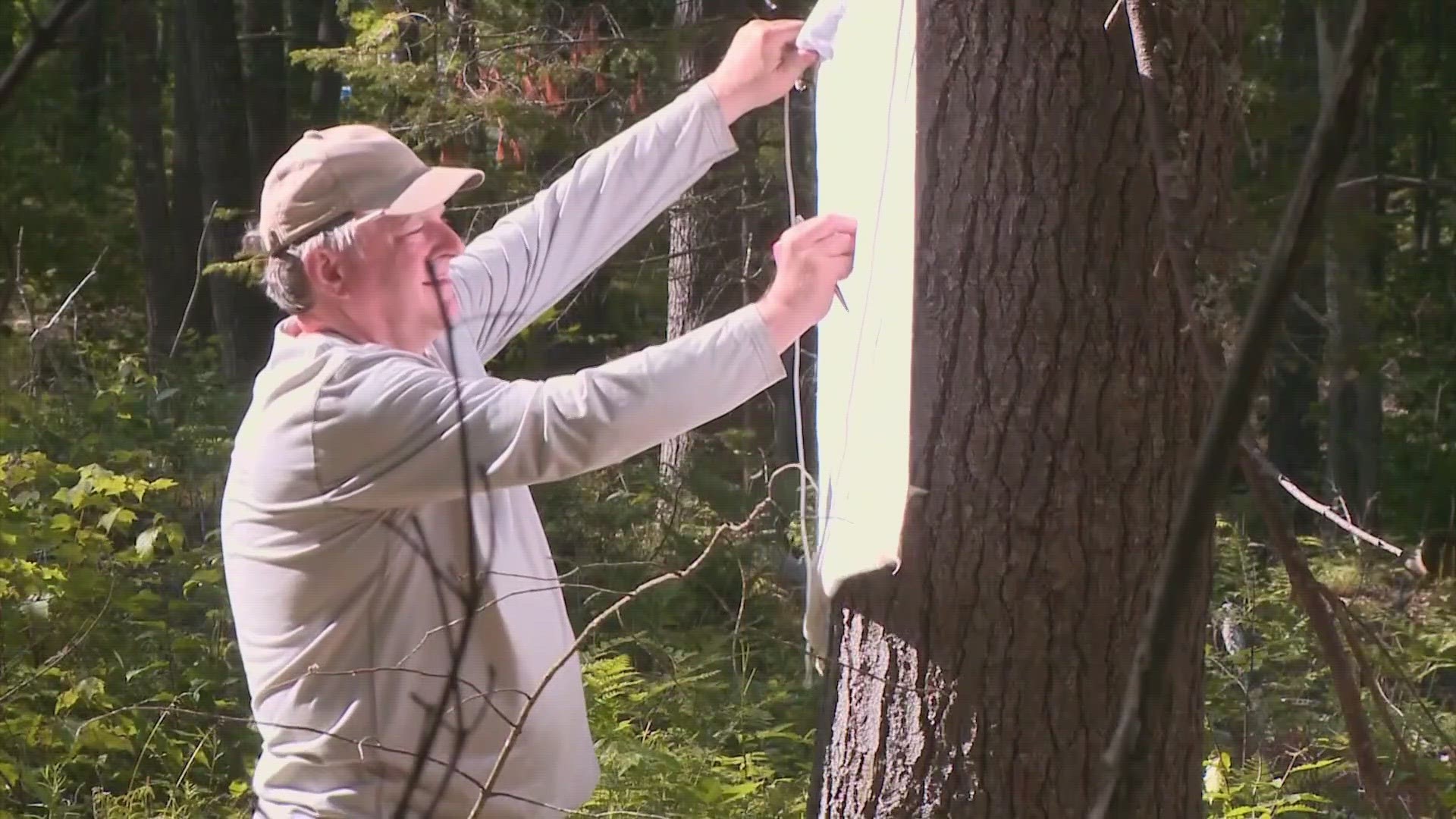ORONO, Maine — With tick season upon us, researchers at the University of Maine want to know what Mainers are doing to keep ticks, especially deer ticks that spread Lyme and other illnesses, out of their yards.
Scientists also want to collect ticks from properties where homeowners aren't doing anything to guard against the parasites. That data could give scientists a better idea of what tick control methods are working and where ticks are emerging. The University of Maine is partnering with the New England Center of Excellence in Vector-borne Diseases. As part of the Project 'ITCH', which stands for 'Is Tick Control Helping?'
Participants can fill out this online survey, explaining what tick control steps they are using and if they are working.
That can range from treating their property, creating barriers where the lawn meets the woods, and using cardboard tubes filled with cotton balls treated with permethrin.
Mice and other rodents who are also hosts for deer ticks that spread Lyme and co-infections, use the cotton to build their nests and are treated with the repellant.
"The ultimate goal is to try to figure out what methods are actually going to work to control ticks in residential areas," Elissa Ballman, the Citizen Science Coordinator at the School of Biology & Ecology at the University of Maine, said.
Researchers are also recruiting homeowners in Penobscot County to participate.
"We are looking for homeowners that are currently not doing any tick control at all and are willing to allow us to come on the property two or three times this summer and collect ticks," Ballman explained.
Deer ticks are emerging in this rural county, and researchers are hoping to get at least 50 homeowners to sign up. The University of Maine students will be combing backyards in mid-summer when young ticks known as nymphs are questing.
Property owners will be notified of what species of ticks were collected. Project 'ITCH" follows the Maine Forest Tick Survey. That two-year project, which ended in 2021, utilized nearly 300 landowners in nine counties, the so-called citizen scientists collected nearly 4,000 ticks. A quarter of them had the pathogens that cause Lyme disease. Properties with invasive plants, which can take over the forest floor and create favorable habitats for ticks, saw the biggest numbers.
'Wooded areas that had invasive plants like barberry or honeysuckle had a lot more ticks as well," Ballman said.
Scientists plan to use data from homeowners who don't do any tick control and compare that information to people who are taking precautions to see what is making a dent in tick numbers.
The results from both projects could help experts pinpoint why and where tick populations in the state are thriving. The deadline to sign up for Project ITCH is May 1. For more information go here.

